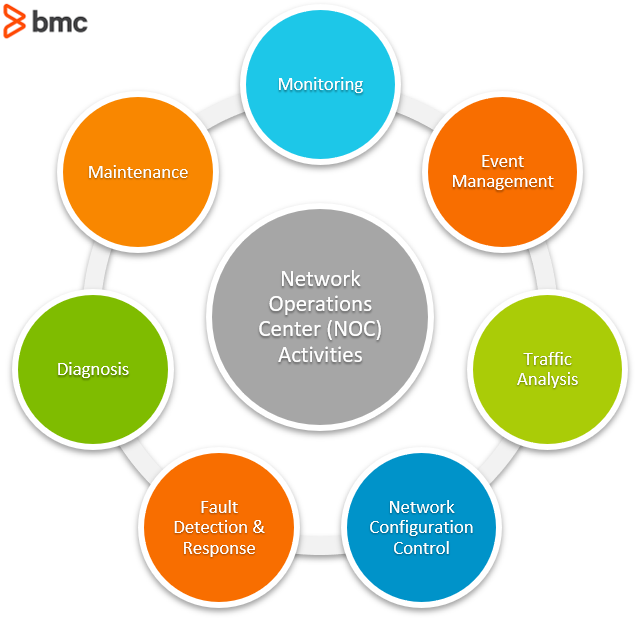The Network Operations Center (NOC): How NOCs Work


In ITIC’s 11th annual Hourly Cost of Downtime Survey, published in 2020, 40% of enterprise respondents estimated that an hour’s downtime cost their organizations $1-5 million dollars in lost revenue, end user productivity, and remedial action by IT administrators.
And that $1-5 million does not consider legal fees, fines, or penalties.
From a user perspective, uptime and performance are key determinants of service quality. That’s why service providers require high levels of visibility on components, configurations, and dependencies that can indicate service status and issues.
The Network Operations Center (NOC) is one such capability that organizations can deploy in order to support this need.
Short for network operations center, the NOC (pronounced “knock”) refers to a centralized location where 24/7 monitoring and management of events affecting technology services and infrastructure takes place.
This location can be managed by you—the direct service provider—or to an outsourced third party.
NOCs were first originated in the late 1970s by telecommunication service providers (thus the ‘network’ name) for displaying the status of switches, routing, and circuits.
Today’s NOC is not only restricted to monitoring networking equipment (e.g. routers, switches, servers), but also cloud, power, environmental, and service aspects such as:
Here, the term ‘operations’ refers to the delivery and support of:
So, it’s not so much about the development side of things, though the NOC might monitor the overall development environment since it is a “live service” for developers.

In terms of activities at the NOC, the two main jobs are monitoring and event management.
Other activities at the NOC include:
Some NOCs are also used for monitoring security events, though some practitioners advocate for separation using a Security Operations Centre (SOC) due to confidentiality concerns.
According to the ITIL® 4 Practice Guides, monitoring focuses on:
On the other hand, event management focuses on those monitored changes of state defined by the organization as an event, determining their significance, and identifying and initiating the correct response to them.
Information about events is also recorded, stored, and provided to relevant parties.
Monitoring and event management activities are key inputs to other service management practices where visibility, uptime, and performance are critical such as:
The NOC engineer is a frontline staff who is expected to:
The scope of a NOC engineer’s job can be quite wide depending on the service provider’s service offerings and infrastructure layout. Some organizations also assign backup and patch management activities to NOC staff.
(Learn more about what NOC engineers do.)

Network Operations Center
Being the mission control for a service provider, screens are the hallmark of any NOC. Due to your centralized location, you likely have both:
More often than not, the main screens show outputs from a centralized monitoring system that gathers, synthesizes, and correlates data from numerous sources—hence the need for visibility by a large number of people.
The operator desks display actual event information including:
So, the screens are the main feature on the walls. Then you have the operator desks and other capabilities that would be required, including:
When it comes to setting up a NOC, it is important to consider both people and environment.
The people aspects will include:
The environment aspects will include:
Due to its critical nature, the design, implementation, and operation of the NOC cannot be left to chance. The input of all stakeholders—especially the NOC engineers—is crucial in ensuring that the NOC achieves the key objectives of the service provider: availability and performance of its technology services and systems.